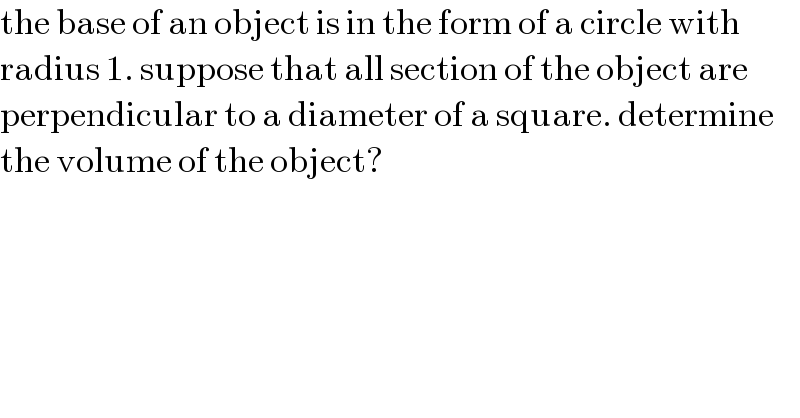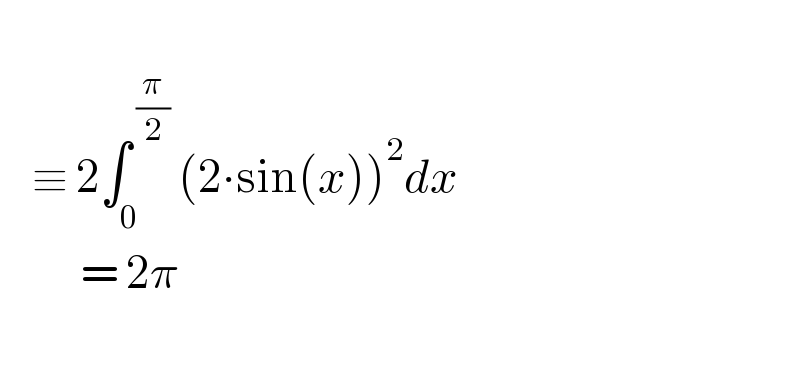
Question and Answers Forum
Question Number 153918 by joki last updated on 12/Sep/21

Answered by talminator2856791 last updated on 12/Sep/21

Commented by alisiao last updated on 12/Sep/21
![= (2 ∫_0 ^( (𝛑/2)) ( ((e^(ix) −e^(−ix) )/i))^2 dx) =(−2 ∫_0 ^( (𝛑/2)) ( e^(2ix) −2 +e^(−2ix) )dx) = (−2 ((e^(2ix) /(2i)) − 2x − (e^(−2ix) /(2i)))_( 0) ^( (𝛑/2)) ) =(−2( sin(2x) −2 x)_( 0) ^( (𝛑/2)) ) = [ −2(0−𝛑)] = 2𝛑 ⟨ M . T ⟩](Q153938.png)
Commented by alisiao last updated on 12/Sep/21

| ||
Question and Answers Forum | ||
Question Number 153918 by joki last updated on 12/Sep/21 | ||
 | ||
Answered by talminator2856791 last updated on 12/Sep/21 | ||
 | ||
| ||
Commented by alisiao last updated on 12/Sep/21 | ||
![= (2 ∫_0 ^( (𝛑/2)) ( ((e^(ix) −e^(−ix) )/i))^2 dx) =(−2 ∫_0 ^( (𝛑/2)) ( e^(2ix) −2 +e^(−2ix) )dx) = (−2 ((e^(2ix) /(2i)) − 2x − (e^(−2ix) /(2i)))_( 0) ^( (𝛑/2)) ) =(−2( sin(2x) −2 x)_( 0) ^( (𝛑/2)) ) = [ −2(0−𝛑)] = 2𝛑 ⟨ M . T ⟩](Q153938.png) | ||
Commented by alisiao last updated on 12/Sep/21 | ||
 | ||